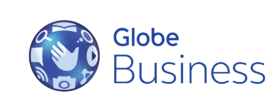In recent years, the financial technology (FinTech) industry has witnessed a surge in the popularity of cash advance apps. These apps offer users quick and easy access to small amounts of money before their next paycheck, providing a convenient solution to short-term financial gaps. This article delves into the world of cash advance apps, examining their benefits, risks, and broader impact on personal finance.
The Rise of Cash Advance Apps
Cash advance apps, often called payday advance apps or early wage access platforms, have gained significant traction due to their accessibility and ease of use. These apps get designed to address the immediate financial needs of individuals who may face unexpected expenses or budget shortfalls before their next payday. Users can request a portion of their earned wages in advance, which is then electronically transferred to their bank accounts.
Benefits of Cash Advance Apps
Financial Flexibility
One of the primary benefits of cash advance apps is their increased financial flexibility. Traditional financial institutions often impose rigid borrowing requirements, making it difficult for individuals with low credit scores or unstable income to access credit. Cash advance apps circumvent these barriers by relying on alternative data sources, such as employment history and transaction data, to determine a user’s eligibility.
Speed and Convenience
Cash advance apps leverage technology to provide users with speedy access to funds. The application process is typically streamlined, with minimal paperwork or documentation required. Once approved, the requested funds are transferred directly to the user’s bank account within minutes or hours, compared to the lengthy processing times associated with traditional loans.
Prevention of Overdraft Fees
For many individuals, unexpected expenses can lead to overdraft fees if their bank account needs more funds. Cash advance apps can help prevent these fees by providing immediate access to funds, allowing users to cover their expenses without risking overdraft charges.
No Credit Check
Traditional loan applications often involve credit checks, which can adversely affect an individual’s credit score if multiple inquiries get made. Cash advance apps generally do not perform credit checks, reducing the impact on a user’s credit history.
Education and Financial Management Tools
Some cash advance apps offer educational resources and financial management tools to help users improve their financial literacy and budgeting skills. These features can contribute to users making more informed financial decisions in the future.
Risks and Considerations
High Fees and Interest Rates
One of the most significant concerns associated with cash advance apps is the potential for high fees and interest rates. While the prices may appear small when expressed as flat dollar amounts, their annualized percentage rates (APRs) can be exceptionally high, often exceeding those of traditional loans. Users must carefully assess the cost of borrowing before committing to a cash advance.
Cycle of Debt
Cash advance apps can inadvertently lead users into a cycle of debt, mainly if they rely on these apps repeatedly to cover ongoing expenses. The convenience of accessing funds before payday may mask the underlying financial issues that need to get addressed.
Data Privacy and Security
Using alternative data sources to determine eligibility raises concerns about user data privacy and security. Users must trust that these apps responsibly handle their sensitive financial information and are not susceptible to breaches or misuse.
Potential for Overuse
While cash advance apps can be valuable in emergencies, the ease of access to funds can lead to overuse. Users might become dependent on these apps for their financial needs, neglecting to build healthier financial habits or savings.
Impact on Financial Habits
The convenience of cash advance apps could deter users from developing sound financial habits, such as budgeting and saving. Relying on quick fixes might encourage individuals to seek more sustainable long-term solutions to their economic challenges.
Conclusion
Cash advance apps have ushered in a new era of financial accessibility and convenience. While they offer benefits like financial flexibility and prevention of overdraft fees, they also come with risks, including high fees, potential debt cycles, and data privacy concerns. As cash advance apps continue to shape the landscape of personal finance, individuals must approach them cautiously, using them as tools to bridge temporary financial gaps rather than as crutches for ongoing financial struggles. Through responsible usage, comprehensive education, and a balanced approach to borrowing, cash advance apps can contribute positively to individuals’ economic resilience and empower them to navigate the complexities of modern financial challenges.




